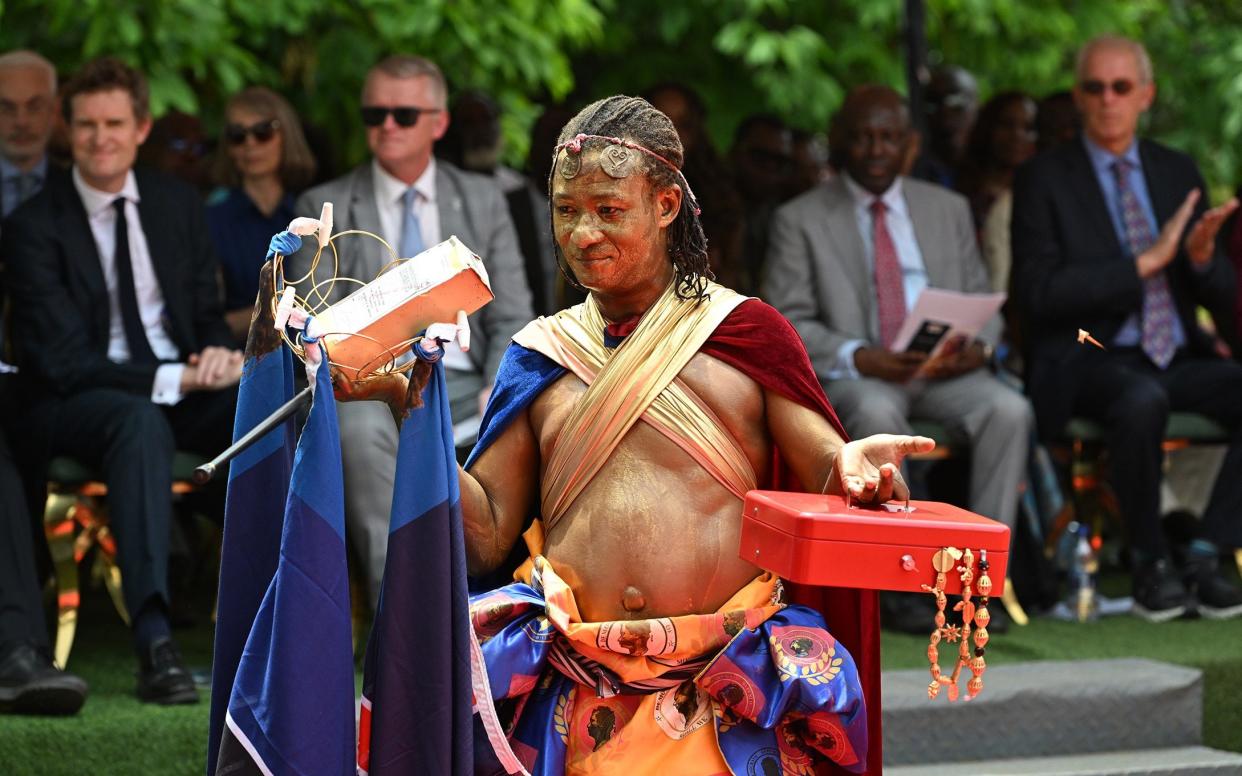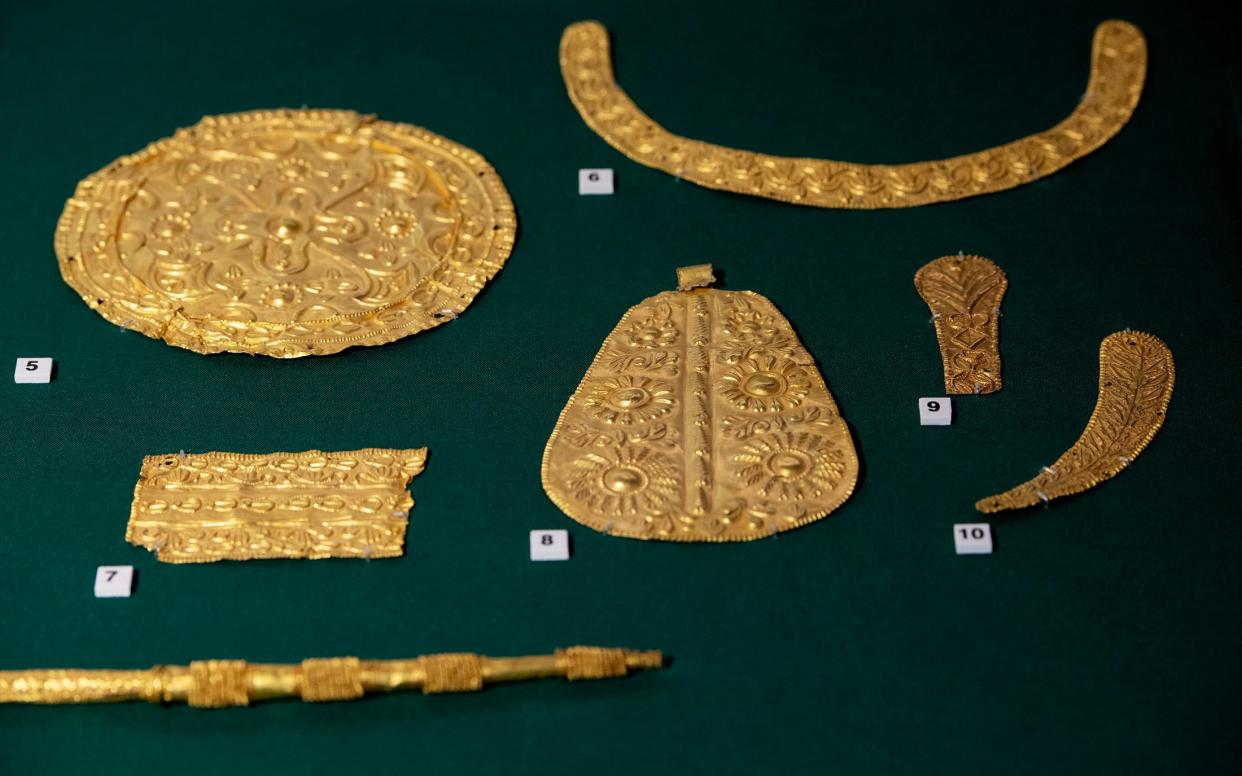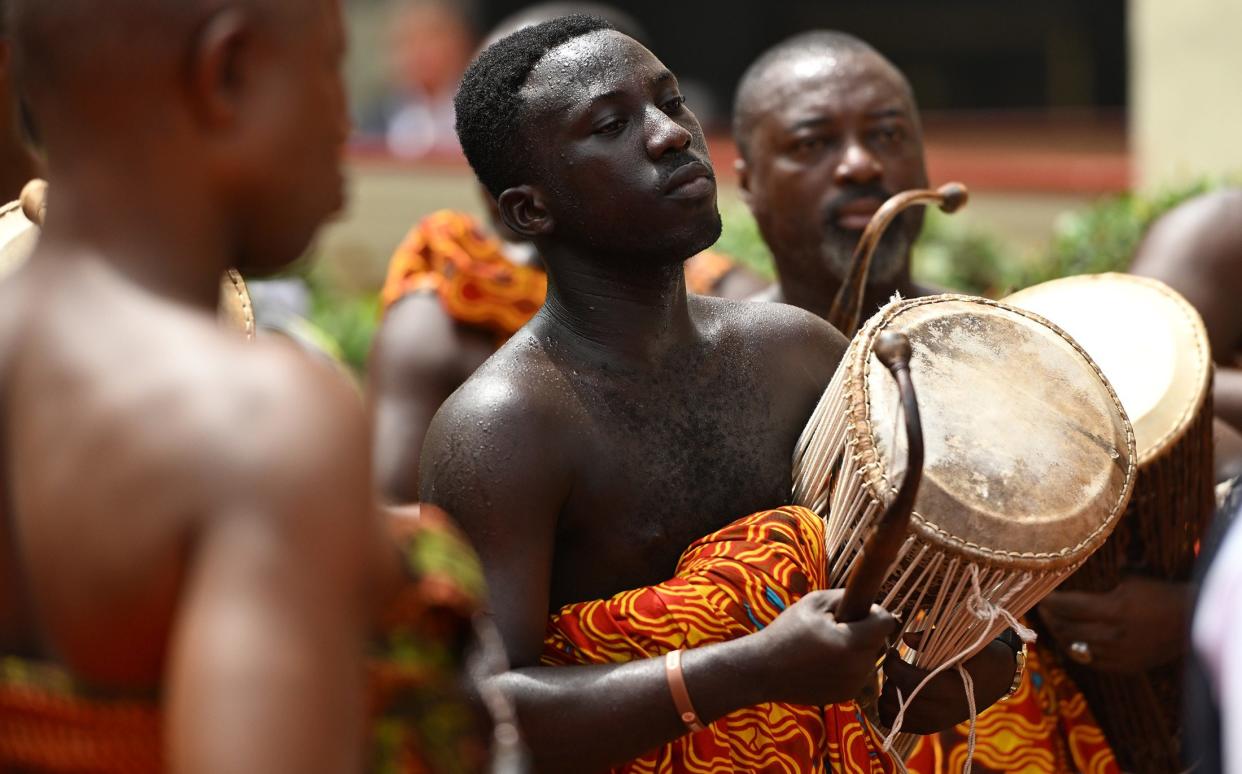Tristram Hunt bowed before Ghanaian king before handing back ‘looted’ gold

Drums beat and incense blows through the robes of sword-wielding chieftains in Kumasi, Ghana. British dignitaries bow to an African king to offer their gold – a remarkable reversal of events 200 years ago.
The officials stooping before the throne in the sweltering heat of the Ghanaian hinterland were there to represent the V&A and British Museum, and to ceremonially return golden treasures to the ruler of the Asante people.
The ethnonym Asante, also sometimes written Ashanti, means “because of war”, and it is because of war that suited officials and robed courtiers assembled before the impassive figure of king or Otumfuo Osei Tutu II on May 1 as he was diligently fanned by his attendants.
His direct ancestors were defeated by the British in 1874 and forced to hand over a wealth of near-sacred golden artefacts as a war indemnity, which was promptly auctioned off to institutions like the V&A and British Museum to raise money for army widows.
A selection of these forcibly extracted treasures have been returned to the king in a landmark loan deal which offers the first glimpse of what may happen to museum artefacts, including the Benin Bronzes, once they have been returned to Africa.
The significance of the return, the first of its kind arranged by the V&A and the British Museum amid growing calls for the restitution of contested artefacts, was evident in the welcome the objects received on their return to the Asante capital of Kumasi.

Crowds poured into the grounds of the Manhyia Palace, where scores of Asante chiefs took their seats in multicoloured kente robes close to the personal museum of the king or “Asantehene”.
Drowning out the crickets and the peacocks, drums heralded his entry. As a beat was hammered out, bodyguards rattled their swords in their scabbards, and the 73-year-old ruler was escorted under a cover of gaudy parasols 10ft across.
A silver incense burner balanced on the head of one attendant, as others held aloft solid gold staffs brought out on occasion of public address.
Dressed in symbolic robes in the Asante colour of green and yellow, the king took his seat on a high dais ringed by his inner court, wafted by a palm-leaf fan, and occasionally dabbed with a towel to wipe away the sweat.
Opposite the king and 40 yards away, V&A director Tristram Hunt and British Museum trustee Chris Gosden sat suited alongside diplomats in the 35C heat.
A senior Asante chief and master of ceremonies cheerily said they were representatives of “our former colonisers”, but diplomatically suggested that the golden artefacts being returned were not “stolen” by the British but simply “went missing”.

Mr Hunt was not as diplomatic. Standing under his own vast parasol, he said the gold he was there to return was “looted”, adding that it had to be returned as a matter of “healing and reconciliation” that might address the “painful scars” of colonialism.
The Asante Empire emerged in the 17th century, and became famed for their warrior prowess and vast wealth derived from gold, and its trade in slaves.
The West African power fought the British in a string of conflicts in the 19th century. Despite early victories, the Asante lost the Third Anglo-Asante War in 1874 and objects of ceremonial and spiritual significance were handed over as part of the treaty to end the war.
In 1896, future founder of the Boy Scouts, Robert Baden Powell, led another campaign against the Asante which resulted in further artefacts being taken and the then king, Prempeh I, being deposed and sent into exile in the Seychelles.
As they reversed this handover, Mr Hunt and Mr Gosden addressed the king, strode to bring him gifts, bowed before the monarch, and officially handed back some of what his ancestors lost.
Concluding the ceremony, the king officially opened the Homecoming exhibition displaying the repatriated gold, welcoming back objects he proclaimed carried the “soul of the Asante”.

